Top Crypto Trading Platforms in 2025







%201.svg)
%201.svg)
Big news: We’re cranking up the heat on AI-driven crypto analytics with the launch of the Token Metrics API and our official SDK (Software Development Kit). This isn’t just an upgrade – it's a quantum leap, giving traders, hedge funds, developers, and institutions direct access to cutting-edge market intelligence, trading signals, and predictive analytics.
Crypto markets move fast, and having real-time, AI-powered insights can be the difference between catching the next big trend or getting left behind. Until now, traders and quants have been wrestling with scattered data, delayed reporting, and a lack of truly predictive analytics. Not anymore.
The Token Metrics API delivers 32+ high-performance endpoints packed with powerful AI-driven insights right into your lap, including:
Getting started with the Token Metrics API is simple:
At Token Metrics, we believe data should be decentralized, predictive, and actionable.
The Token Metrics API & SDK bring next-gen AI-powered crypto intelligence to anyone looking to trade smarter, build better, and stay ahead of the curve. With our official SDK, developers can plug these insights into their own trading bots, dashboards, and research tools – no need to reinvent the wheel.
%201.svg)
%201.svg)
Layer 1 tokens like Hedera represent bets on specific blockchain architectures winning developer and user mindshare. HBAR carries both systematic crypto risk and unsystematic risk from Hedera's technical roadmap execution and ecosystem growth. Multi-chain thesis suggests diversifying across several L1s rather than concentrating in one, since predicting which chains will dominate remains difficult.
The projections below show how HBAR might perform under different market cap scenarios. While Hedera may have strong fundamentals, prudent portfolio construction balances L1 exposure across Ethereum, competing smart contract platforms, and Bitcoin to capture the sector without overexposure to any single chain's fate.

Disclosure
Educational purposes only, not financial advice. Crypto is volatile, do your own research and manage risk.
How to read it: Each band blends cycle analogues and market-cap share math with TA guardrails. Base assumes steady adoption and neutral or positive macro. Moon layers in a liquidity boom. Bear assumes muted flows and tighter liquidity.
TM Agent baseline:
Token Metrics lead metric for Hedera, cashtag $HBAR, is a TM Grade of 61.8%, which maps to Hold, and the trading signal is bearish, indicating short-term downward momentum. This means Token Metrics views $HBAR as having reasonably solid fundamentals but limited conviction for strong outperformance in the near term.
A concise long-term numeric view for a 12-month horizon: Token Metrics scenarios center around a range of about $0.06 to $0.18, with a base case near $0.10, reflecting steady ecosystem growth, moderate adoption of Hedera services, and continued enterprise partnerships. Implication: if Bitcoin and broader crypto risk appetite improve, $HBAR could revisit the higher end, while a risk-off market or slower-than-expected developer traction would keep it toward the lower bound.
Token Metrics scenarios span four market cap tiers, each representing different levels of crypto market maturity and liquidity:




These ranges illustrate potential outcomes for concentrated HBAR positions, but investors should weigh whether single-asset exposure matches their risk tolerance or whether diversified strategies better suit their objectives.
Professional investors across asset classes prefer diversified exposure over concentrated bets for good reason. Hedera faces numerous risks - technical vulnerabilities, competitive pressure, regulatory targeting, team execution failure - any of which could derail HBAR performance independent of broader market conditions. Token Metrics Indices spread this risk across one hundred tokens, ensuring no single failure destroys your crypto portfolio.
Diversification becomes especially critical in crypto given the sector's nascency and rapid evolution. Technologies and narratives that dominate today may be obsolete within years as the space matures. By holding HBAR exclusively, you're betting not only on crypto succeeding but on Hedera specifically remaining relevant. Index approaches hedge against picking the wrong horse while maintaining full crypto exposure.
Tax efficiency and rebalancing challenges also favor indices over managing concentrated positions. Token Metrics Indices handle portfolio construction, rebalancing, and position sizing systematically, eliminating the emotional and logistical burden of doing this manually with multiple tokens.
Early access to Token Metrics Indices
Hedera is a high-performance public ledger that emphasizes speed, low fees, and energy efficiency, positioning itself for enterprise and decentralized applications. It uses a unique Hashgraph consensus that enables fast finality and high throughput, paired with a council-governed model that targets real-world use cases like payments, tokenization, and decentralized identity.
HBAR is the native token used for fees, staking, and network security, and it supports smart contracts and decentralized file storage. Adoption draws from partnerships and integrations, though decentralization levels and reliance on institutional demand are often discussed in the community.
Token Metrics AI provides comprehensive context on Hedera's positioning and challenges.
Fundamental Grade: 81.08% (Community 74%, Tokenomics 100%, Exchange 100%, VC 59%, DeFi Scanner 85%).
Technology Grade: 62.39% (Activity 58%, Repository 68%, Collaboration 74%, Security 56%, DeFi Scanner 85%).
Can HBAR reach $1.00?
Yes. Based on the scenarios, HBAR could reach $1.00 or above in the higher tiers. The 23T tier projects $1.07 in the moon case and the 31T tier projects $1.42 in the moon case. Achieving this requires broad market cap expansion and Hedera maintaining competitive position. Not financial advice.
What price could HBAR reach in the moon case?
Moon case projections range from $0.37 at 8T to $1.42 at 31T. These scenarios assume maximum liquidity expansion and strong Hedera adoption. Diversified strategies aim to capture upside across multiple tokens rather than betting exclusively on any single moon scenario. Not financial advice.
What's the risk/reward profile for HBAR?
Risk and reward span from $0.27 in the lowest bear case to $1.42 in the highest moon case. Downside risks include regulatory or infrastructure setbacks and competitive pressure, while upside drivers include improved liquidity and enterprise adoption. Concentrated positions amplify both tails, while diversified strategies smooth outcomes.
Disclosure
Educational purposes only, not financial advice. Crypto is volatile, concentration amplifies risk, and diversification is a fundamental principle of prudent portfolio construction. Do your own research and manage risk appropriately.
%201.svg)
%201.svg)
Exchange tokens desrive value from trading volume and platform revenue, creating linkage between crypto market activity and LEO price action. LEO Token delivers utility through reduced trading fees and enhanced platform services on Bitfinex and iFinex across Ethereum and EOS. Token Metrics scenarios below model LEO outcomes across different total crypto market cap environments.

Disclosure
Educational purposes only, not financial advice. Crypto is volatile, do your own research and manage risk.
How to read it: Each band blends cycle analogues and market-cap share math with TA guardrails. Base assumes steady adoption and neutral or positive macro. Moon layers in a liquidity boom. Bear assumes muted flows and tighter liquidity.
TM Agent baseline: Token Metrics probabilities favor a modest range between about $5 and $15, with a base case around current levels near $9, conditional on exchange token utility remaining steady, and downside risk if centralized exchange macro pressure increases.
Token Metrics scenarios span four market cap tiers reflecting different crypto market maturity levels:




LEO Token is the native utility token of the Bitfinex and iFinex ecosystem, designed to provide benefits like reduced trading fees, enhanced lending and borrowing terms, and access to exclusive features on the platform. It operates on both Ethereum (ERC-20) and EOS blockchains, offering flexibility for users.
The primary role of LEO is to serve as a utility token within the exchange ecosystem, enabling fee discounts, participation in token sales, and other platform-specific advantages. Common usage patterns include holding LEO to reduce trading costs and utilizing it for enhanced platform services, positioning it primarily within the exchange token sector.
What gives LEO value?
LEO accrues value through reduced trading fees and enhanced platform services within the Bitfinex and iFinex ecosystem. Demand drivers include exchange usage and access to platform features, while supply dynamics follow the token’s exchange utility design. Value realization depends on platform activity and user adoption.
What price could LEO reach in the moon case?
Moon case projections range from $14.48 at 8T to $43.63 at 31T. These scenarios require maximum market cap expansion and strong exchange activity. Not financial advice.
Curious how these forecasts are made? Token Metrics delivers LEO on-chain grades, forecasts, and deep research on 6,000+ tokens. Instantly compare fundamentals, on-chain scores, and AI-powered predictions.
Disclosure
Educational purposes only, not financial advice. Crypto is volatile, do your own research and manage risk.
%201.svg)
%201.svg)
Layer 1 tokens like Sui represent bets on specific blockchain architectures winning developer and user mindshare. SUI carries both systematic crypto risk and unsystematic risk from Sui's technical roadmap execution and ecosystem growth. Multi-chain thesis suggests diversifying across several L1s rather than concentrating in one, since predicting which chains will dominate remains difficult.
The projections below show how SUI might perform under different market cap scenarios. While Sui may have strong fundamentals, prudent portfolio construction balances L1 exposure across Ethereum, competing smart contract platforms, and Bitcoin to capture the sector without overexposure to any single chain's fate.

Disclosure
Educational purposes only, not financial advice. Crypto is volatile, do your own research and manage risk.
Each band blends cycle analogues and market-cap share math with TA guardrails. Base assumes steady adoption and neutral or positive macro. Moon layers in a liquidity boom. Bear assumes muted flows and tighter liquidity.
TM Agent baseline: Token Metrics lead metric for Sui, cashtag $SUI, is a TM Grade of 67.4%, which maps to a Hold, and the trading signal is bearish, indicating short-term downward momentum. This suggests Token Metrics sees $SUI as having reasonable fundamentals but not yet strong conviction for substantial outperformance, while near-term momentum is negative and could limit rallies. Market context, brief: Bitcoin’s price direction is currently the primary market driver, and a risk-off Bitcoin environment increases downside pressure on layer-1 tokens like $SUI.
Professional investors across asset classes prefer diversified exposure over concentrated bets for good reason. Sui faces numerous risks - technical vulnerabilities, competitive pressure, regulatory targeting, team execution failure - any of which could derail SUI performance independent of broader market conditions. Token Metrics Indices spread this risk across one hundred tokens, ensuring no single failure destroys your crypto portfolio.
Diversification becomes especially critical in crypto given the sector's nascency and rapid evolution. Technologies and narratives that dominate today may be obsolete within years as the space matures. By holding SUI exclusively, you're betting not only on crypto succeeding but on Sui specifically remaining relevant. Index approaches hedge against picking the wrong horse while maintaining full crypto exposure.
Early access to Token Metrics Indices
Token Metrics scenarios span four market cap tiers, each representing different levels of crypto market maturity and liquidity:




These ranges illustrate potential outcomes for concentrated SUI positions, but investors should weigh whether single-asset exposure matches their risk tolerance or whether diversified strategies better suit their objectives.
Sui is a layer-1 blockchain network designed for general-purpose smart contracts and scalable user experiences. It targets high throughput and fast settlement, aiming to support applications that need low-latency interactions and horizontal scaling.
SUI is the native token used for transaction fees and staking, aligning validator incentives and securing the network. It underpins activity across common crypto sectors such as NFTs and DeFi while the ecosystem builds developer tooling and integrations.
Vision: Sui aims to create a highly scalable and low-latency blockchain platform that enables seamless user experiences for decentralized applications. Its vision centers on making blockchain technology accessible and efficient for mainstream applications by removing traditional bottlenecks in transaction speed and cost.
Problem: Many existing blockchains face trade-offs between scalability, security, and decentralization, often resulting in high fees and slow transaction finality during peak usage. This limits their effectiveness for applications requiring instant settlement, frequent interactions, or large user bases, such as games or social platforms. Sui addresses the need for a network that can scale horizontally without sacrificing speed or cost-efficiency.
Solution: Sui uses a unique object-centric blockchain model and the Move programming language to enable parallel transaction processing, allowing high throughput and instant finality for many operations. Its consensus mechanism, Narwhal and Tusk, is optimized for speed and scalability by decoupling transaction dissemination from ordering. The network supports smart contracts, NFTs, and decentralized applications, with an emphasis on developer ease and user experience. Staking is available for network security, aligning with common proof-of-stake utility patterns.
Market Analysis: Sui competes in the layer-1 blockchain space with platforms like Solana, Avalanche, and Aptos, all targeting high-performance decentralized applications. It differentiates itself through its object-based data model and parallel execution, aiming for superior scalability in specific workloads. Adoption drivers include developer tooling, ecosystem incentives, and integration with wallets and decentralized exchanges. The broader market for high-throughput blockchains is driven by demand for scalable Web3 applications, though it faces risks from technical complexity, regulatory uncertainty, and intense competition.
Fundamental Grade: 77.60% (Community 80%, Tokenomics 60%, Exchange 100%, VC 76%, DeFi Scanner 75%).
Technology Grade: 79.06% (Activity 77%, Repository 72%, Collaboration 89%, Security N/A, DeFi Scanner 75%).
Token Metrics empowers you to analyze Sui and hundreds of digital assets with AI-driven ratings, on-chain and fundamental data, and index solutions to manage portfolio risk smartly in a rapidly evolving crypto market.
What price could SUI reach in the moon case?
Moon case projections range from $7.94 at 8T to $40.61 at 31T. These scenarios assume maximum liquidity expansion and strong Sui adoption. Diversified strategies aim to capture upside across multiple tokens rather than betting exclusively on any single moon scenario. Not financial advice.
What's the risk/reward profile for SUI?
Risk/reward spans from $4.64 to $40.61. Downside risks include regulatory pressure and competitive displacement, while upside drivers include ecosystem growth and favorable liquidity. Concentrated positions amplify both tails, while diversified strategies smooth outcomes.
What are the biggest risks to SUI?
Key risks include regulatory actions, technical issues, competitive pressure from other L1s, and adverse market liquidity. Concentrated SUI positions magnify exposure to these risks. Diversified strategies spread risk across tokens with different profiles, reducing portfolio vulnerability to any single failure point.
Disclosure
Educational purposes only, not financial advice. Crypto is volatile, concentration amplifies risk, and diversification is a fundamental principle of prudent portfolio construction. Do your own research and manage risk appropriately.

%201.svg)
%201.svg)
APIs power modern software by letting different programs communicate. Whether you're a product manager, developer, or curious professional, understanding what an API is unlocks how digital services integrate, automate workflows, and expose data. This guide explains APIs in practical terms, compares common types and standards, and outlines steps to evaluate and integrate APIs safely and effectively.
An Application Programming Interface (API) is a set of rules and protocols that lets one software component request services or data from another. Think of an API as a formalized handshake: it defines available operations (endpoints), input and output formats (request and response schemas), authentication methods, rate limits, and error codes. APIs abstract internal implementation details so consumers can interact with functionality without needing to know how it’s built.
Why this matters: clear API design reduces friction across teams, enables third-party integrations, and turns capabilities into composable building blocks for new products.
At a technical level, most web APIs follow a request-response model over HTTP or HTTPS. A client sends an HTTP request to a URL (endpoint) using methods such as GET, POST, PUT, or DELETE. The server validates the request, executes the requested operation, and returns a structured response—commonly JSON or XML.
Beyond HTTP APIs, other interaction styles exist, such as RPC, GraphQL (query-driven), and event-driven APIs where messages are pushed via pub/sub or webhooks.
Understanding API types helps teams pick the right interface for their use case:
Standards and documentation formats—OpenAPI/Swagger, AsyncAPI, and GraphQL schemas—are essential for discoverability, automated client generation, and interoperability.
APIs enable many practical scenarios: mobile apps consuming backend services, third-party integrations, internal microservices, analytics pipelines, or connecting fintech and crypto infrastructure. When evaluating or integrating an API, consider these criteria:
Integration steps typically include reading docs, testing endpoints in a sandbox, implementing authentication flows, building retry and backoff logic, and monitoring production usage. Automated testing, contract validation, and schema-driven client generation (e.g., from OpenAPI) accelerate reliable implementations.
Build Smarter Crypto Apps & AI Agents with Token Metrics
Token Metrics provides real-time prices, trading signals, and on-chain insights all from one powerful API. Grab a Free API Key
APIs are not neutral; design choices have downstream effects. Versioning strategies affect client upgrade costs, overly chatty APIs can increase latency and cost, and lax authentication exposes data risk. For teams building or consuming APIs, investing early in observability (metrics, tracing, logs), automated testing, and clear SLAs reduces long-term operational friction.
AI-driven research and analytics platforms can help analyze API ecosystems and on-chain data in crypto contexts. Tools such as Token Metrics provide model-backed signals and data streams that teams can incorporate, while still applying rigorous validation and privacy controls.
REST is resource-focused and uses multiple endpoints for different data, while GraphQL exposes a single endpoint that accepts queries specifying exactly which fields a client needs. REST can be simpler to cache; GraphQL reduces over- and under-fetching but can increase server complexity.
Use TLS for transport, strong authentication (API keys, OAuth, JWT), enforce least privilege via scopes, rotate credentials, rate-limit suspicious traffic, and validate inputs to avoid injection attacks. Regular audits and secrets management best practices are also important.
Versioning allows providers to evolve functionality without breaking existing consumers. Common approaches include path-based versions (/v1/), header-based versions, or semantic versioning. Choose a clear policy and communicate deprecation timelines.
Yes. WebSockets, Server-Sent Events, and pub/sub platforms enable low-latency, push-based updates. Webhooks are a simpler pattern for near-real-time notifications where the provider posts events to a registered URL.
Start with sandbox environments and contract tests. Use integration tests to exercise auth flows and error paths, load tests to validate performance under expected traffic, and monitoring to track latency, error rates, and unexpected schema changes.
This article is for educational and informational purposes only. It does not constitute investment, legal, or professional advice. Always conduct independent research and consult qualified professionals when making decisions related to software, security, or financial matters.

%201.svg)
%201.svg)
APIs power modern software by enabling applications to communicate, share data, and automate work. Whether you are a developer, product manager, or a technically curious reader, understanding the core meaning of "API" unlocks how digital services interconnect and how data-driven products are built.
An API, or application programming interface, is a defined set of rules and protocols that lets one software component request services or data from another. At its core, an API abstracts complexity: it exposes a clear surface of inputs and outputs while hiding internal implementation details. Think of an API as a service contract: send a properly formatted request, and you receive a predictable response.
APIs appear at many levels: operating systems expose APIs for hardware access, libraries expose APIs for reusable code, and web APIs let distributed systems exchange structured data over networks. The common traits are formalized formats (JSON, XML), transport rules (HTTP, gRPC), and documented endpoints that describe available operations.
Most contemporary web APIs follow a client-server pattern. A client crafts a request—usually over HTTP—with a method (GET, POST, PUT, DELETE), an endpoint URL, headers (for authentication or content type), and sometimes a body payload. The server receives the request, validates it, executes the requested action, and returns a response with a status code and structured data.
Key technical concepts include:
Protocols like REST, GraphQL, and gRPC represent different architectural styles. REST emphasizes resource-based URLs and stateless requests, GraphQL allows flexible queries via a single endpoint, and gRPC focuses on efficient binary protocols for high-performance use cases.
APIs enable a wide range of practical use cases across industries. Some common types and examples include:
In practice, APIs power mobile apps, dashboards, automation scripts, and AI pipelines. For example, integrating an external data API can enrich machine learning models, while internal APIs can decouple frontend and backend development for faster iteration.
When adopting or building APIs, focus on reliability, documentation, and security. A practical evaluation checklist includes:
For teams building with APIs, automated testing and contract tests guard against regressions. When integrating third-party APIs, consider fallback strategies and caching to maintain resilience if an external service degrades.
Build Smarter Crypto Apps & AI Agents with Token Metrics
Token Metrics provides real-time prices, trading signals, and on-chain insights all from one powerful API. Grab a Free API Key
API stands for "application programming interface." It’s a formal specification that enables software components to interact by defining requests, responses, and rules for communication.
No. Security depends on implementation. Common protections include TLS (HTTPS), authentication tokens, input validation, rate limiting, and monitoring. Assess a provider's security posture and follow best practices for storing credentials and validating responses.
Public APIs are accessible to external developers, often with self-service onboarding. Private APIs are restricted to internal teams or partners and can enforce stricter controls and different SLAs. Design considerations vary based on intended audience and risk profile.
Basic use often requires technical knowledge, but many platforms provide low-code connectors, SDKs, or tools that abstract raw requests. For non-developers, no-code platforms can enable simple integrations, while developers can build custom workflows for advanced use.
API keys are credentials that identify the calling application. Rate limits control how many requests can be made in a time window to protect the service. Both are operational controls—keys for authorization and rate limits for stability.
AI can accelerate discovery and analysis of API data: automating schema extraction, generating integration code snippets, summarizing endpoint behavior, and detecting anomalies in responses. Use AI as a research aid while maintaining human oversight for security and correctness.
The information provided in this article is educational and informational only. It does not constitute professional, financial, or legal advice. Always conduct your own research and consult qualified professionals before making technology or business decisions.

%201.svg)
%201.svg)
From social networks to financial services and complex blockchain platforms, Application Programming Interfaces (APIs) play a foundational yet often unseen role in the digital world. For developers, analysts, and business leaders navigating crypto and blockchain innovation, understanding APIs is critical—not just for integrating data, but for building scalable, intelligent applications.
At its core, an API (Application Programming Interface) is a set of defined rules and protocols that facilitate communication between different software programs. APIs serve as bridges, letting one application request and receive specific data or services from another—without needing to understand its internal workings. In the context of crypto, APIs are a vital backbone for everything from accessing market data in real-time to interacting with smart contracts or managing digital assets on exchanges.
Why are APIs so important? They:
For web3 and decentralized finance (DeFi), APIs are the pipes through which information and functionality flow.
Crypto APIs span a range of use-cases. Here are the most common types:
APIs are typically accessed via endpoints—URLs that represent specific requests (for example, /api/v1/prices or /api/v1/account/balance). They can use various formats, but RESTful JSON APIs dominate thanks to web-friendliness and simplicity.
APIs deliver distinct advantages but also introduce complexities—especially within the fast-evolving crypto sector.
Understanding the trade-offs between ease of access and risk is a crucial part of an effective API strategy, especially in crypto where assets and data value are significant.
APIs have revolutionized how crypto tools are built and used. Here are just a few scenarios:
Forward-thinking developers increasingly combine APIs with AI and machine learning to surface new opportunities or flag potential risks in the noisy world of digital assets.
The crypto API landscape is vast, ranging from open public endpoints to specialized commercial products. Key considerations include:
Increasingly, platforms such as Token Metrics provide unified API access to pricing, on-chain analytics, and trading signals, allowing developers and analysts to streamline their workflows and focus on higher-value research.
Build Smarter Crypto Apps & AI Agents with Token Metrics
Token Metrics provides real-time prices, trading signals, and on-chain insights all from one powerful API. Grab a Free API Key
Public APIs are open for anyone to use, often requiring just a free key or none at all. Private APIs require authentication and are used for managing user-specific actions, like placing trades or accessing sensitive account data. Both types are crucial in crypto ecosystems.
API security combines factors such as unique API keys, encrypted connections (HTTPS), and rate limiting to restrict unauthorized access. Some APIs incorporate role-based permissions or two-factor authentication for enhanced protection.
APIs may be rate-limited to protect infrastructure from abuse and ensure fair use among users. Restrictions can also be set for regulatory compliance, pricing models, or to prevent market manipulation in financial applications.
Start by selecting an API provider aligned with your needs—data, trading, analytics, etc. Follow their documentation to register an account, generate an API key, and make test requests. Most modern APIs offer free tiers for initial exploration.
Absolutely. APIs are commonly used to provide the raw data required for AI model development, and AI platforms themselves often offer APIs to serve predictions and recommendations directly into crypto applications.
This article is for informational and educational purposes only. It does not constitute investment or financial advice, and should not be construed as such. Always conduct thorough research and consult professional advisors before making decisions related to APIs, cryptocurrencies, or blockchain technology.

%201.svg)
%201.svg)
The cryptocurrency landscape has fundamentally shifted, and traditional investment strategies are failing investors across the board. If you're wondering why your altcoin portfolio is down 95% despite solid fundamentals, you're not alone—and there's a critical reason behind this market transformation.

According to recent market analysis from Token Metrics, we've entered what experts are calling a "trader's market." The old premise of buying based on technology and fundamentals has essentially expired this cycle. Instead, crypto has evolved into an attention economy focused on trading narratives rather than long-term value accumulation.
"The old strategy of buying and holding fundamental assets like in past cycles and expecting them to do well—that ship has sailed," explains Ian Balina, highlighting a harsh reality many investors are facing.
The core issue lies in market saturation. Today's crypto market features 100 to 1,000 times more tokens competing for the same amount of trading volume as previous cycles. This massive increase in competition has fundamentally altered market dynamics, making it nearly impossible for individual projects to maintain sustained growth through fundamentals alone.
Key factors driving this shift include:
One crucial metric investors should monitor is the Bitcoin versus Altcoin Season indicator. Currently sitting at 58%, this metric suggests that nearly 60% of returns are flowing into altcoins rather than Bitcoin.
Historically, when this indicator crosses 57%, it signals an ideal time to start trimming altcoin profits. The danger zone begins at 60% and above—previous cycle tops have seen this metric reach 80-88%, marking optimal exit points.
"This is literally a leading indicator historically on when to sell the top," notes the analysis, pointing to data from 2021 and 2022 cycle peaks.
Despite challenges in traditional crypto investing, institutional adoption continues accelerating through treasury companies. MicroStrategy leads with $70 billion in Bitcoin holdings, including $23 billion in unrealized gains. BitMine recently purchased $2.2 billion worth of Ethereum, targeting 5% of ETH's total supply.
This institutional wave extends beyond Bitcoin and Ethereum:
While most altcoins struggle, certain projects demonstrate sustainable growth models. Hyperliquid stands out as a prime example, maintaining consistent upward momentum through:
Similarly, projects with genuine utility and revenue sharing are outperforming purely speculative assets.
Interestingly, meme coins represent one segment that continues generating significant returns, albeit with extreme volatility. Projects like Bub (up 30% recently) demonstrate that community-driven assets can still achieve impressive gains, though these remain high-risk trading opportunities rather than investment plays.
Looking ahead, World Liberty Financial (WLFI) represents a significant upcoming event. Backed by the Trump family and featuring partnerships with established DeFi projects, WLFI launches September 1st with several notable characteristics:
Given these market dynamics, successful crypto participants are adapting their approaches:
The crypto market's evolution into a trader's paradise doesn't mean opportunities have disappeared—they've simply changed form. Success now requires:
The transformation of crypto from a fundamentals-driven market to an attention-based trading ecosystem represents a natural evolution as the space matures. While this shift has created challenges for traditional investors, it has also opened new opportunities for those willing to adapt their strategies.
The key lies in understanding that we're no longer in 2017 or 2021—we're in a new era where narrative, timing, and trading acumen matter more than technology assessments. Those who embrace this reality while maintaining disciplined risk management will be best positioned for success in the current market environment.
Whether you're yielding farming for steady returns, trading narratives for quick gains, or waiting for the next institutional wave, the most important step is acknowledging that the rules have changed—and your strategy should change with them.

%201.svg)
%201.svg)
The cryptocurrency market is experiencing a seismic shift as institutional adoption accelerates through treasury companies and exchange-traded funds. This institutional wave is fundamentally altering market dynamics and creating new investment opportunities for both retail and professional investors.
Treasury companies have emerged as the dominant force driving crypto adoption in 2025. These entities, which hold cryptocurrency as primary treasury assets, are experiencing unprecedented growth and creating massive buying pressure across major digital assets.

MicroStrategy continues to dominate Bitcoin treasury holdings with an impressive $70 billion worth of Bitcoin, including $23 billion in unrealized gains. The company's strategy has proven so successful that it's spawning imitators across multiple cryptocurrency ecosystems.
Recent data shows treasury companies are expanding beyond Bitcoin into Ethereum and other major cryptocurrencies, creating diversified institutional exposure to digital assets.
BitMine recently made headlines with a $2.2 billion Ethereum purchase, signaling institutional confidence in ETH's long-term prospects. The company has set an ambitious target of capturing 5% of Ethereum's total supply, demonstrating the scale of institutional appetite.
This move coincides with Ethereum hitting new all-time highs of $4,946, up 250% from April lows. The combination of treasury company purchases and growing DeFi activity has created a powerful upward momentum for ETH.
The Solana ecosystem is witnessing significant institutional interest:
B Strategy, backed by Binance founder CZ and former Bitman CFO, launched a $1 billion US-listed vehicle specifically to purchase BNB tokens. This institutional backing provides significant credibility to Binance's native token and demonstrates the expanding scope of treasury strategies.
Parallel to treasury company growth, stablecoins are experiencing explosive expansion. Total stablecoin supply now exceeds $250 billion, with projections suggesting growth to $1 trillion by next year.
MetaMask's launch of MUSD, their native stablecoin developed with Bridge (acquired by Stripe), represents a significant development. Key features include:
Current supply stands at 41 million MUSD with 5,000 holders, but this is expected to grow rapidly to billions given MetaMask's user base.
Several major developments indicate mainstream financial adoption:
Singapore's DBS Bank launched tokenized structured notes on Ethereum mainnet, though initially limited to accredited investors.
SBI Holdings from Japan, managing $74 billion, entered a joint venture with Startale to tokenize US and Japanese stocks, enabling 24/7 trading and fractional ownership.
Multiple South Korean banks are in discussions with Tether and Circle to distribute USD stablecoins, following increasing regulatory clarity.
The ETF landscape continues expanding beyond Bitcoin, creating new institutional access points:
Ethereum ETFs are seeing increased inflows as institutional interest grows. The combination of ETF buying and treasury company purchases is creating sustained upward pressure on ETH prices.

Vanna AI represents a new category of projects attracting institutional attention. Founded by Eric Voorhees (Shapeshift founder), the project offers:
The project demonstrates how utility-focused tokens can attract both institutional and retail interest through genuine product-market fit.
The Hyperliquid ecosystem is experiencing explosive growth, with several projects showing institutional-grade metrics:
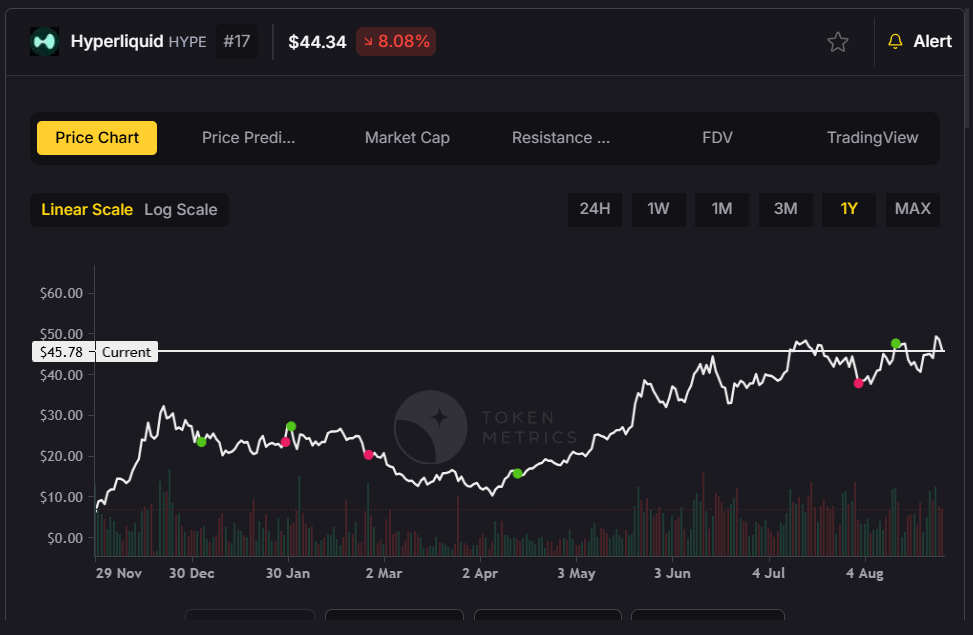
Kinetic Protocol serves as the liquid staking solution for Hyperliquid's native HYPE token, similar to Lido for Ethereum. TVL has grown from under $400 million to over $1.7 billion, demonstrating organic adoption.
Unit Protocol acts as the native bridge for Bitcoin, Ethereum, and USDC to Hyperliquid, with nearly $1 billion TVL despite no active point system.
Traditional DeFi protocols are expanding to capture multi-chain market share:
Base, Coinbase's Layer 2 solution, is emerging as a leader in consumer-focused crypto applications. The rebrand from Coinbase Wallet to Base App signals a broader strategy to become the "super app" for crypto.
Recent consumer applications include:
Given the institutional wave, experts recommend focusing on established assets:
Secondary opportunities include:
Treasury companies often trade at premiums to their underlying holdings, similar to traditional investment vehicles. Key metrics to monitor:
The altcoin season indicator currently sits at 58%, approaching the 60%+ zone that historically marks cycle tops. This suggests:
The institutional adoption wave shows no signs of slowing. Predictions suggest:
The convergence of treasury companies, ETF expansion, and consumer application growth is creating a new phase of cryptocurrency adoption. Unlike previous cycles driven by retail speculation, this institutional wave appears sustainable and growing.
Investors who understand these trends and position accordingly—whether through direct cryptocurrency exposure, treasury company stocks, or emerging ecosystem tokens—are likely to benefit from this fundamental shift in crypto market structure.
The key is recognizing that we're no longer in an early-stage speculative market, but rather witnessing the birth of a mature digital asset class with institutional backing, regulatory clarity, and real-world utility. This transformation creates both opportunities and risks that require sophisticated analysis and strategic positioning.

%201.svg)
%201.svg)
The cryptocurrency market has officially shifted into risk-off mode, marking a significant change from the bullish momentum we've witnessed over recent months. According to leading crypto analysts from Token Matrics, while the overall market indicator shows "neutral," the underlying momentum has been declining dramatically – a pattern that demands immediate attention from investors.
Bitcoin, currently trading around $114,000, has experienced what analysts describe as "momentum crashing." Despite reaching an all-time high of $124,000 just last week, the world's largest cryptocurrency has retreated below $115,000, triggering a clear sell signal on technical indicators.
This dramatic shift becomes even more apparent when examining the Bitcoin vs Altcoin Season indicator. From July 10th, when 90% of returns were concentrated in Bitcoin during its price discovery phase, the market briefly shifted to an even split between Bitcoin and altcoin returns. However, we're now witnessing a return to Bitcoin dominance – a classic sign of risk-off sentiment among crypto investors.
"I think this is just probably a healthy cooling-off correction. I don't think this is the end per se," explains Ian Belina, highlighting that while the current pullback appears significant, it may represent a necessary market reset rather than a trend reversal.
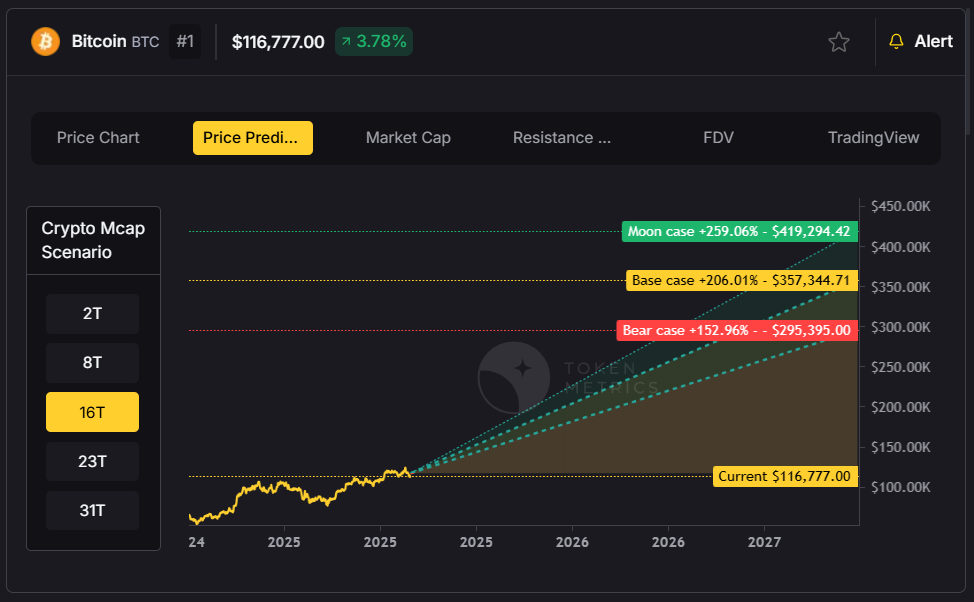
While Bitcoin struggles with declining momentum, Ethereum has emerged as the standout performer, demonstrating remarkable resilience in the current market environment. Trading around $4,300, Ethereum has surged approximately 70% since June, vastly outperforming Bitcoin's modest 9-10% gains over the same period.
The ETH/BTC ratio has climbed to 2025 highs at 0.037%, signaling a significant shift in investor preference toward Ethereum-based assets. This performance is particularly noteworthy given the regulatory clarity emerging in the United States, which has created favorable conditions for stablecoin protocols and crypto treasury adoption.
Abdullah, Head of Research & Investments at Token Matrics, remains bullish on Ethereum's prospects: "As long as ETH is above 4k, I think ETH holders shouldn't be worried. Ethereum will keep outperforming Bitcoin and Solana within the next one to three months."
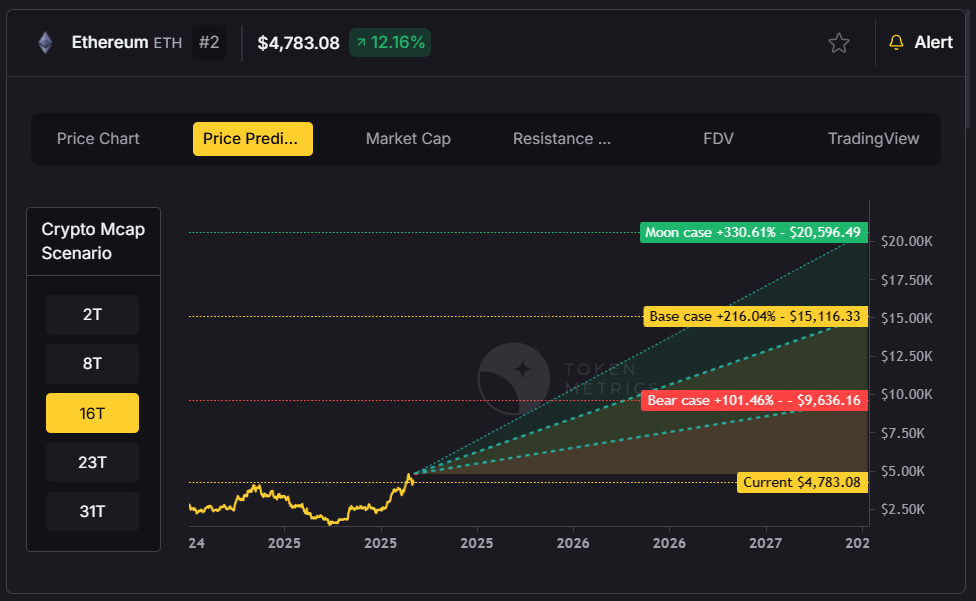
Solana presents a more concerning picture, with analysts expecting a potential capitulation event that could see the token decline 30-40% from current levels. Having broken major technical support levels, Solana's momentum indicators have turned decidedly bearish.
However, this bearish outlook comes with a silver lining for long-term investors. "I think it will be a purely buy the dip opportunity before Solana starts to run again for $500 or maybe $1,000 by the end of the cycle," notes Abdullah, suggesting that current weakness may present attractive entry points for patient investors.
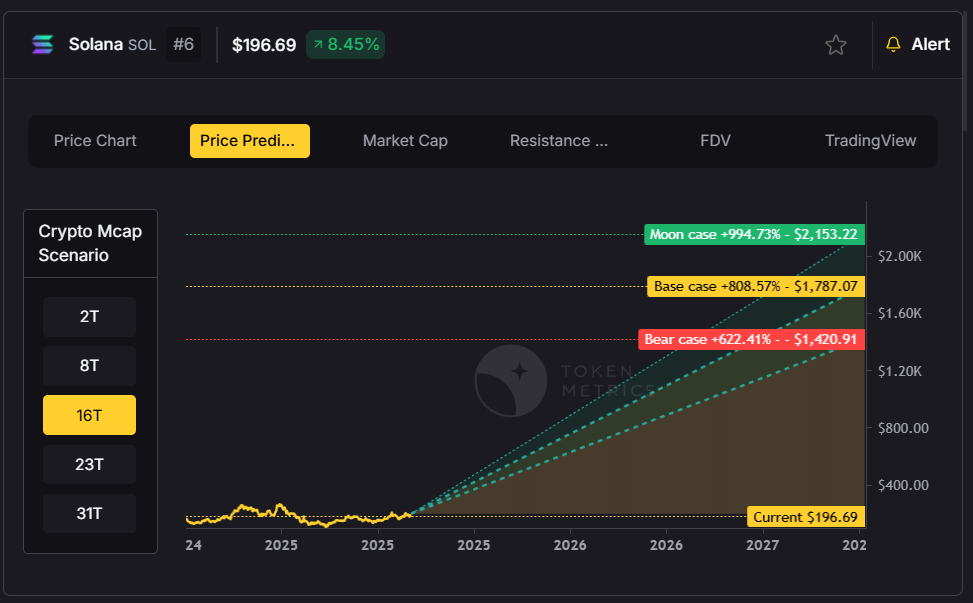
A major catalyst supporting the crypto market's long-term outlook is the continued accumulation by corporate treasuries. MicroStrategy recently purchased an additional 430 Bitcoin for $51 million, bringing its total holdings to approximately $7.2 billion with unrealized gains of $2.6 billion.
The trend extends beyond Bitcoin, with Ethereum treasuries gaining significant momentum. Bitcoin Immersion, led by Tom Lee, has acquired 1.52 million ETH valued at $6.6 billion, making it the second-largest public crypto treasury behind MicroStrategy and the largest for Ethereum specifically.
These institutional moves represent more than mere speculation – they signal a fundamental shift toward crypto as a legitimate treasury asset. As of now, 4% of Bitcoin's supply and 2% of Ethereum's supply is held by public companies and treasury entities.
Despite the overall bearish sentiment, several tokens continue to show strength and present compelling trading opportunities:
Chainlink has emerged as a standout performer, recently breaking through the $22-$23 resistance level that had acted as a range high for over two years. The enterprise L1 narrative is driving adoption, as Wall Street-backed firms launching their own Layer 1 blockchains require reliable oracle services.
"I think it's only a matter of time till Chainlink sees a new all-time high," predicts Abdullah, citing the protocol's dominant market position and recent tokenomics improvements, including a buyback program tied to enterprise revenue.
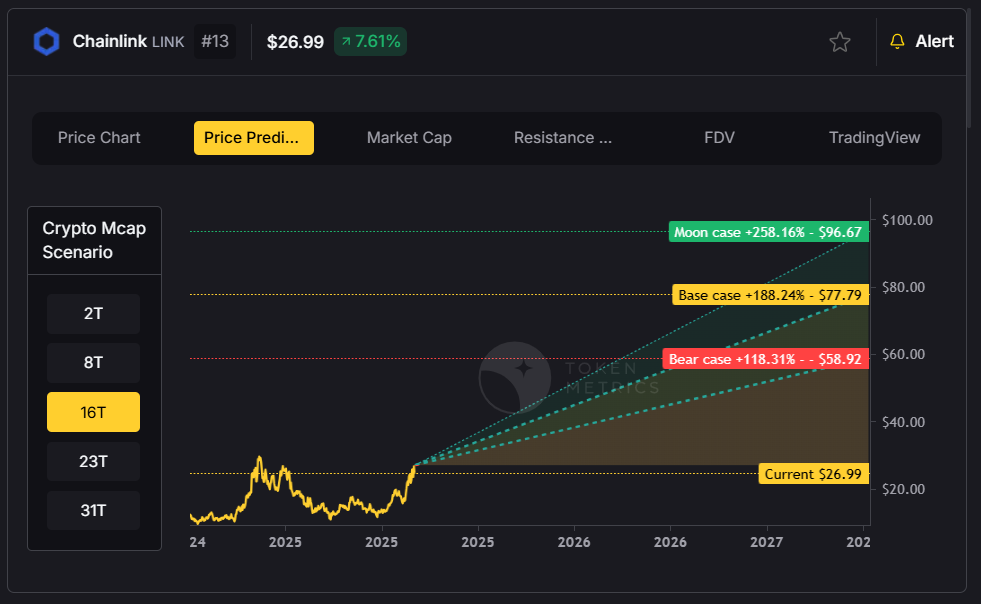
Despite being undervalued relative to its fundamentals, Pendle continues to show strength with a Total Value Locked (TVL) of approximately $10 billion against a market cap of only $1.4 billion. As the leading yield trading platform, Pendle offers institutional investors the ability to fix yields and trade funding rates with leverage.
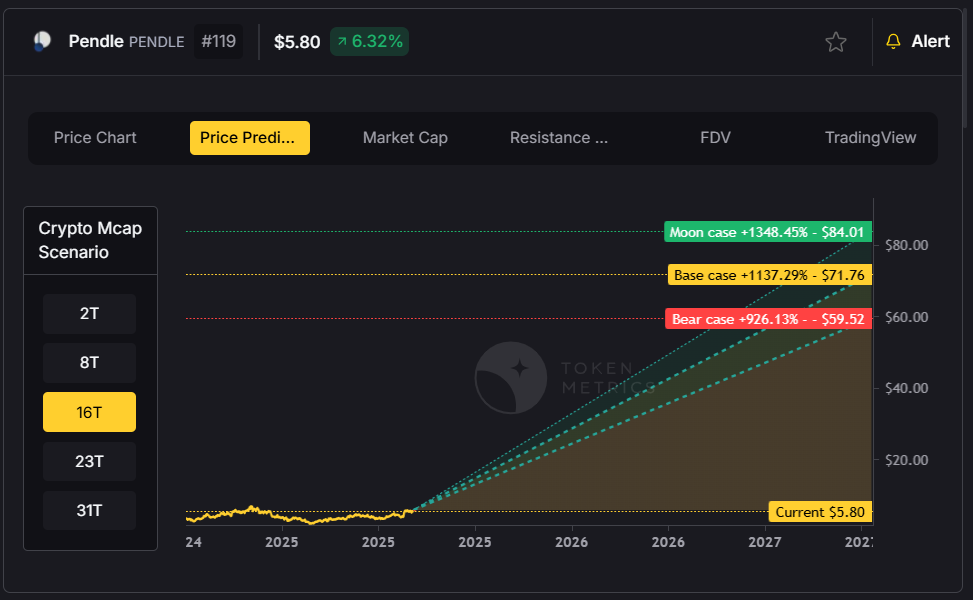
Tokens within the Base ecosystem, including Aerodrome and Zora, have shown resilience despite recent corrections. With Coinbase planning to expand DEX trading access beyond the current 1% of users, these protocols could see significant volume increases.
Looking ahead, analysts expect a consolidation or correction period lasting several weeks into mid-to-late September. However, Q4 remains positioned for potential bullish momentum, particularly if the Federal Reserve delivers dovish commentary at the upcoming Jackson Hole speech.
The key for investors lies in monitoring critical indicators: the market sentiment gauge, Bitcoin vs Altcoin season metrics, and individual token momentum scores. When over 60% of market returns shift to altcoins while the overall market shows strong buy signals, it typically indicates an optimal profit-taking opportunity.
For those navigating this complex environment, focusing on tokens with strong fundamentals, high trader grades (80%+), and positive momentum indicators remains the most prudent approach. While the current market presents challenges, it also offers opportunities for those who can correctly identify and time the strongest performers in each narrative cycle.
The crypto market's evolution continues, and while short-term volatility is inevitable, the underlying infrastructure and institutional adoption trends suggest a maturing asset class with significant long-term potential.

%201.svg)
%201.svg)
The cryptocurrency market has evolved dramatically, transforming from a speculative playground into a sophisticated ecosystem requiring strategic thinking and data-driven approaches. For investors looking to maximize returns with a $10,000 budget, understanding the right methodology can mean the difference between modest gains and life-changing wealth.
Successful crypto trading begins with understanding market cycles and timing. The most critical tool in any trader's arsenal is the Token Metrics market indicator – a comprehensive gauge that tells you when to be aggressive versus when to exercise caution.
When the Token Metrics market indicator shows "strong buy" with gaining momentum, it's time to operate at full throttle. Conversely, during "sell" or "strong sell" periods, conservative positioning protects capital for future opportunities. This simple principle has helped countless investors avoid the devastating losses that plague emotional traders.
"Everything starts with the market indicator. This kind of tells you how aggressive to be with your trades," explains Token Matrix's Ian Belina, emphasizing that successful trading requires adapting intensity to market conditions rather than maintaining constant aggression.
Perhaps the most overlooked yet powerful tool for profit maximization is the Bitcoin vs Altcoin Season indicator. This metric reveals when over 60% of market returns shift to altcoins – a historically reliable signal for taking profits.
Historical data shows this indicator preceded major market tops with remarkable accuracy. In December 2024, when altcoins captured nearly 60% of returns, the market peaked within days. Similarly, the January peak occurred precisely when this metric flashed warning signs.
Smart traders use this as a systematic profit-taking trigger. When altcoin returns exceed 60% while the overall market shows strong bullish signals, it's time to take 25-50% off the table, regardless of individual token performance.
Rather than scouring thousands of cryptocurrencies, successful traders focus on a curated list of trending tokens with high trader grades (80%+). This approach filters market noise and identifies where institutional money and sophisticated algorithms are placing bets.
The trending tokens methodology works because it combines:
Current examples demonstrating this strategy's power include:
Chainlink has broken through multi-year resistance at $22-$23, positioning for a potential run toward $37. The enterprise Layer 1 narrative drives this momentum as Wall Street firms launching blockchain infrastructure require robust oracle services. With improved tokenomics and a revenue-tied buyback program, Chainlink represents a "blue chip" crypto with institutional staying power.
Despite already delivering 100% returns in 30 days, Bio Protocol continues showing strength due to backing from Binance Labs and recent $1 million investment from notable crypto figure and Bitmex founder Arthur Hayes. The DeSci (Decentralized Science) narrative provides fundamental support for continued growth.
Trading at what analysts consider deeply undervalued levels, Pendle operates with $10 billion in Total Value Locked against just a $1.4 billion market cap. As institutions seek yield optimization tools, Pendle's unique position in yield tokenization and trading presents significant upside potential.
Successful crypto investors understand that markets are driven by narratives – compelling stories that capture investor imagination and drive capital flows. Current dominant narratives include:
Coinbase's gradual rollout of DEX trading functionality (currently available to just 1% of users) creates a massive catalyst for Base ecosystem tokens. Aerodrome, serving as the primary DEX aggregator, and Zora, providing social Web3 functionality, both benefit from this expanding user base.
Following the success of tokens like AIXBT (which delivered 17x returns during peak AI agent season), smart traders monitor for the next wave of AI-focused projects. However, timing remains crucial – entering established trends often leads to disappointment.
With SEC leadership changes bringing crypto-friendly policies, tokens positioned to benefit from clearer regulations command premium valuations. Stablecoin protocols and institutional DeFi platforms lead this category.
Professional crypto traders never go "all-in" on any single opportunity. The optimal approach involves:
This diversification ensures portfolio survival during inevitable corrections while maintaining upside exposure to breakout performances.
Phase 1: Market Assessment (Days 1-7)
Phase 2: Initial Deployment (Days 8-30)
Phase 3: Active Management (Ongoing)
Recent analysis suggests the current crypto cycle may extend into 2026, following historical patterns where each cycle lasts approximately 25% longer than its predecessor. This extended timeline provides multiple opportunities for strategic repositioning and compound growth.
With total crypto market cap at $4 trillion (compared to the previous cycle peak of $3 trillion), significant upside remains. Investors positioning correctly for this extended cycle could see their $10,000 investments grow substantially.

Emotional Trading: Following social media hype instead of data-driven signals leads to buying tops and selling bottoms.
Overconcentration: Putting too much capital in a single token, regardless of conviction level.
Ignoring Market Cycles: Failing to adjust strategy based on overall market conditions.
Chasing Past Performance: Buying tokens after they've already completed major moves.
The future of crypto trading lies in automation. Token Matrix and similar platforms are developing automated indices that can:
These tools democratize access to institutional-grade trading strategies, potentially transforming modest investments into significant wealth over time.
Turning $10,000 into life-changing wealth in crypto requires discipline, patience, and systematic execution. By focusing on market timing, following trending narratives, and maintaining strict risk management, investors position themselves for outsized returns while protecting against catastrophic losses.
The key lies not in finding the next 100x token, but in consistently identifying and properly timing 2-5x opportunities across multiple market cycles. With the right approach, compound growth and strategic reinvestment can transform modest beginnings into substantial wealth.
Remember: in crypto, survival is the first priority, profit is the second, and extraordinary gains come to those who master both.

%201.svg)
%201.svg)
The cryptocurrency industry is witnessing a paradigm shift as major exchanges race to build comprehensive "super apps" that consolidate trading, social features, and DeFi into single platforms. Leading this revolution is Coinbase's Base app, a ambitious project that could redefine how users interact with crypto.
The Base app represents Coinbase's vision of a crypto "everything app" – think WeChat for the blockchain era. Built on Coinbase's Layer 2 solution, Base, this platform integrates multiple crypto functions into one seamless experience:
1. Centralized & Decentralized Trading
2. Social Creator Economy
3. Mini App Ecosystem
4. Integrated Payments
Farcaster serves as the technical backbone for the Base app's social and mini-app functionality. As a decentralized social networking protocol built on Ethereum, Farcaster enables:
The Base app ecosystem presents significant opportunities for developers:
Mini App Development:
Success Stories:
Multiple major exchanges are pursuing similar strategies:
Coinbase (Base):
OKX (X Layer):
Binance (BNB Chain):
Kraken (Inc L2):
The exchange blokchain trend is driving significant value creation:
BNB Example:
Implications for Coinbase:
1. Regulatory Clarity
2. User Experience Focus
3. Ecosystem Integration
4. Developer Support
The Base app is designed to create powerful network effects:
Aerodrome (AERO):
Farcaster Ecosystem:
Zora (ZORA):
Base Ecosystem Tokens:
Scalability Concerns:
Competition Intensity:
Token Launch Uncertainty:
International Expansion:
Narrative Rotation:
The success of super apps could fundamentally change crypto:
User Behavior:
Developer Economics:
Market Structure:
Crypto super apps pose a direct threat to:
Current Status: Limited beta with waitlist Access Methods:
Preparation Steps:
Opportunity Windows:
The Base app represents more than just another crypto platform – it's a bet on the future of digital interaction. Success could establish Coinbase as the dominant force in crypto user experience, while failure could cede ground to more agile competitors.
User Adoption:
Developer Ecosystem:
Market Performance:
The Coinbase Base app represents a potentially transformative moment in crypto infrastructure. By combining social features, trading capabilities, and developer tools into a single platform, it could become the primary gateway for mainstream crypto adoption.
For investors and developers, the opportunity lies not just in the Base app itself, but in the entire ecosystem it's creating. Early positioning in Base-native projects, particularly those with lower market caps and strong integration potential, could yield significant returns as the platform scales.
However, success is far from guaranteed. The competitive landscape is intense, regulatory challenges remain, and crypto market narratives shift rapidly. The winners will be those who can execute flawlessly while adapting to changing market conditions.
The race for the crypto super app is just beginning – and the Base app has taken an early lead.
Stay ahead of crypto infrastructure trends. The platforms that win user mindshare today will shape the industry's future tomorrow.
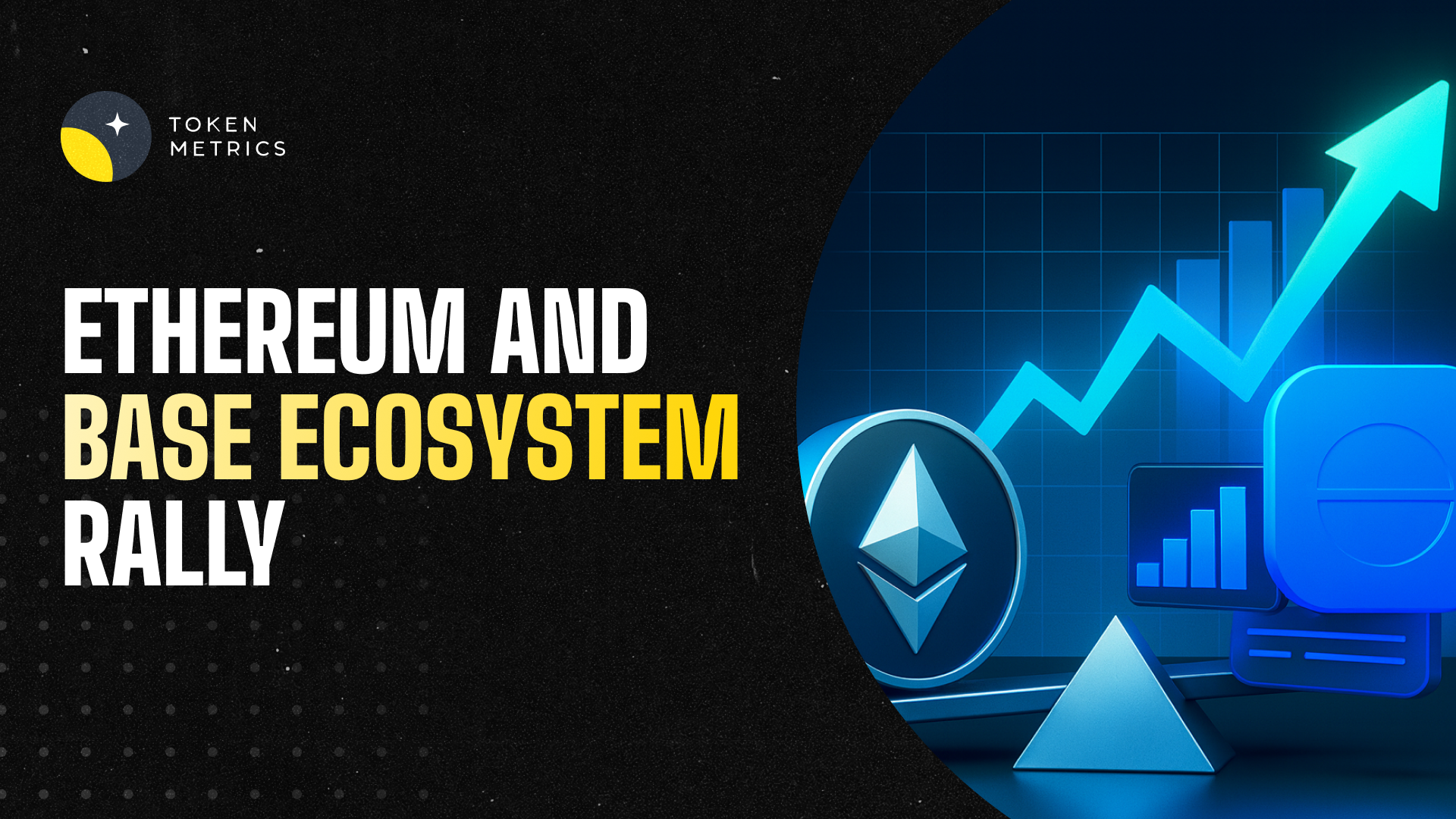
%201.svg)
%201.svg)
The cryptocurrency market is experiencing a significant narrative shift, with Ethereum and Base ecosystem projects leading the charge in early 2025. Recent market analysis reveals a concentrated rally in ETH-related tokens, presenting both opportunities and risks for crypto traders.
The crypto market has entered what experts are calling "Ethereum season," with ETH positioning itself as the number two highest-rated token in terms of trader grade. This surge isn't coincidental – it's driven by several key factors:
Major corporations are increasingly adding Ethereum to their treasury holdings, following the path Bitcoin paved. This institutional adoption has created sustained buying pressure, with Ethereum benefiting from the same "digital gold" narrative that propelled Bitcoin to new heights.
Coinbase's Layer 2 solution, Base, has become the most relevant L2 network, overtaking Arbitrum's previous dominance. The recent rebranding of Coinbase Wallet to the "Base app" has created a powerful ecosystem effect, benefiting projects deeply integrated with Base infrastructure.
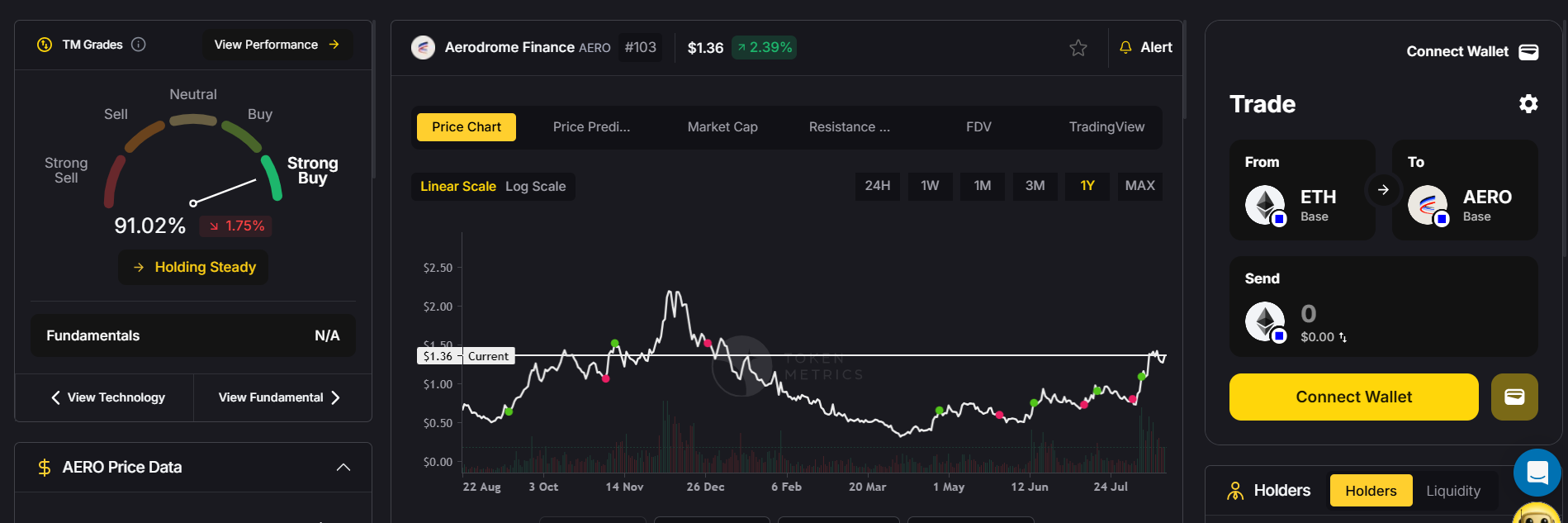
Current Market Cap: $1.2 billion
FDV: $2.3 billion
Aerodrome has emerged as the go-to liquidity solution for the Base ecosystem. With its tight integration into Coinbase's Base app ecosystem, AERO has significant upside potential as the Base app remains in limited beta. Once full access opens to Coinbase's broader user base, liquidity demand could skyrocket.
Key Advantages:

Current Market Cap: Under $1 billion
FDV: $1.6 billion
Pendle is positioning itself as essential DeFi infrastructure, often compared to the "new Aave." The project has attracted significant institutional investment and offers unique yield trading mechanisms that differentiate it from traditional lending protocols.
Growth Drivers:

Current Market Cap: $2.3 billion
FDV: $11.6 billion
Ethena has created a revolutionary synthetic stablecoin (USDe) that generates yield through delta-neutral trading strategies. The protocol has achieved remarkable growth, reaching 10 billion in stablecoin supply faster than both USDC and Tether historically.
Unique Features:
The current market requires a narrative-focused trading strategy rather than pure fundamental analysis. Here's why:
The crypto market has become increasingly trader-oriented, with attention shifting between sectors rapidly. Projects with strong fundamentals can underperform if they're not part of the current narrative cycle.
Previous cycles show clear rotation patterns:
Smart traders are:
Coinbase's strategic moves are creating a "super app" ecosystem similar to WeChat but built on crypto rails:
Other exchanges are following suit:
History shows that even blue-chip projects can decline 85-90% when narratives shift. AI tokens like AXBT fell from $0.80 to $0.13 despite strong fundamentals.
The Ethereum/Base narrative may be reaching maturity. Smart money is:
Successful traders are implementing:
Smart traders are already positioning for potential rotations into:
The Ethereum and Base ecosystem rally presents compelling short-term opportunities, but requires disciplined execution and risk management. Focus on projects with strong narrative alignment, lower valuations relative to peers, and clear catalysts for continued growth.
Remember: in the current market environment, being right about fundamentals isn't enough – you need to be right about narrative timing. Stay flexible, use alerts effectively, and be prepared to rotate when the market's attention shifts.
The crypto market moves fast. Stay informed with real-time analysis and trading signals to maximize your opportunities while managing risk effectively.


 Create Your Free Account
Create Your Free Account9450 SW Gemini Dr
PMB 59348
Beaverton, Oregon 97008-7105 US
.svg)




.png)
Token Metrics Media LLC is a regular publication of information, analysis, and commentary focused especially on blockchain technology and business, cryptocurrency, blockchain-based tokens, market trends, and trading strategies.
Token Metrics Media LLC does not provide individually tailored investment advice and does not take a subscriber’s or anyone’s personal circumstances into consideration when discussing investments; nor is Token Metrics Advisers LLC registered as an investment adviser or broker-dealer in any jurisdiction.
Information contained herein is not an offer or solicitation to buy, hold, or sell any security. The Token Metrics team has advised and invested in many blockchain companies. A complete list of their advisory roles and current holdings can be viewed here: https://tokenmetrics.com/disclosures.html/
Token Metrics Media LLC relies on information from various sources believed to be reliable, including clients and third parties, but cannot guarantee the accuracy and completeness of that information. Additionally, Token Metrics Media LLC does not provide tax advice, and investors are encouraged to consult with their personal tax advisors.
All investing involves risk, including the possible loss of money you invest, and past performance does not guarantee future performance. Ratings and price predictions are provided for informational and illustrative purposes, and may not reflect actual future performance.



